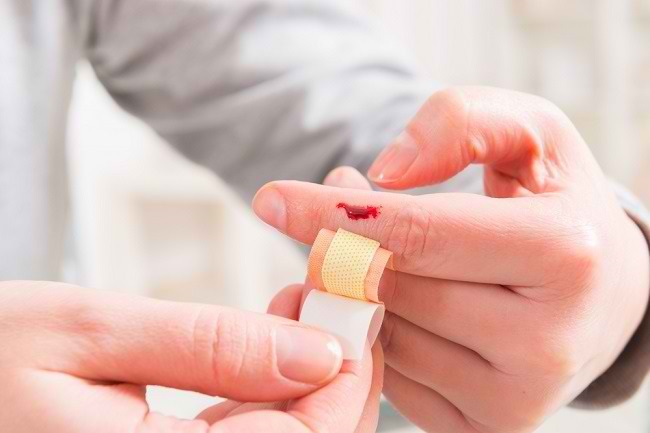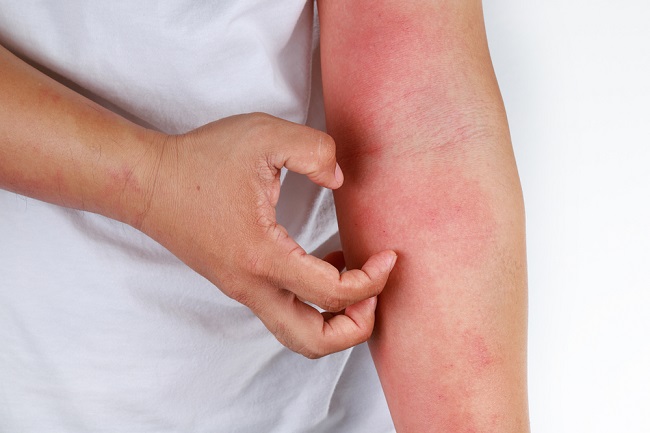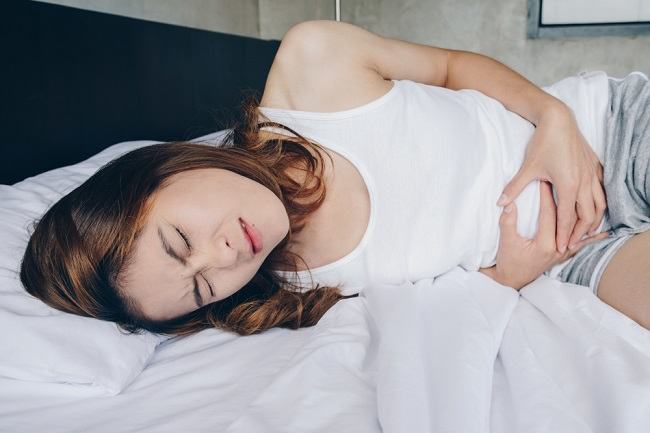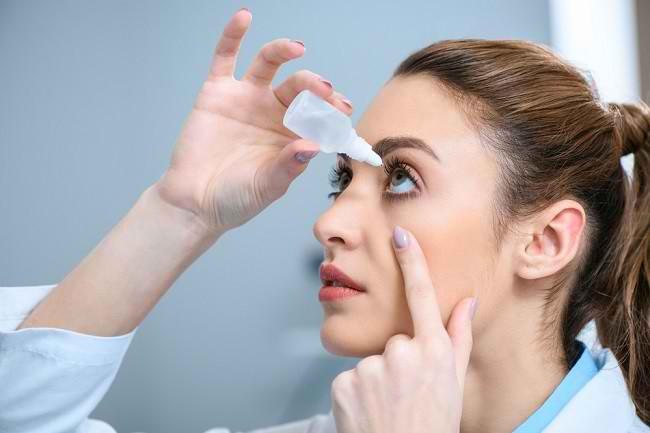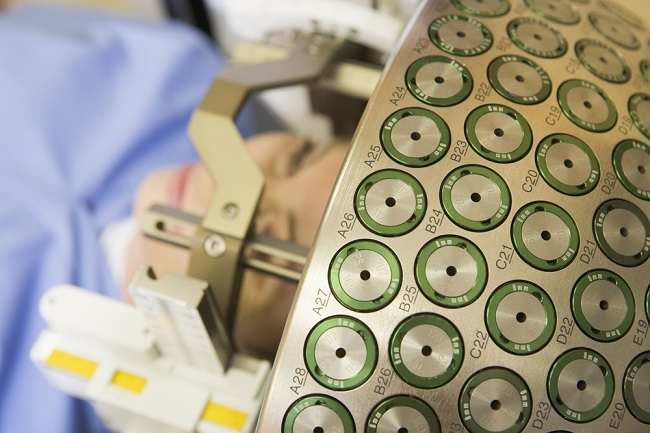Eyelid surgery or blepharoplasty is a procedure to repair shape and structure eyelid. Eyelid surgery is performed by removing excess skin or fat on the eyelids.
As you age, the muscles around your eyelids weaken. This condition can cause a buildup of fat in the eyelids. This accumulation of fat then causes the upper eyelid to sag and eye bags form on the lower eyelid.

The condition of sagging eyelids, in addition to making a person look older, can also narrow the field of vision, especially peripheral vision. Eyelid surgery can treat this condition by removing excess skin and fat on the eyelids.
Indications for Eyelid Surgery
Eyelid surgery is generally performed on patients aged 35 years and over who have the following conditions:
- The upper eyelid hangs so that the eye does not open properly
- Excess skin on the upper eyelid that causes narrowing of the visual field
- Excess skin on the lower eyelid
- Formation of eye bags
Eyelid Surgery Warning
Eyelid surgery should only be performed on patients whose muscles and tissues around the face are still healthy, so that the desired results can be achieved. Therefore, tell your doctor if you suffer from any of the following conditions:
- Eye diseases, such as glaucoma, dry eye, or retinal detachment
- Thyroid hormone disorders, both hypothyroidism and hyperthyroidism
- Heart disease and blood flow disorders, such as high blood pressure
- Diabetes
Before Eyelid Surgery
Before undergoing surgery, the patient should consult a plastic surgeon and an ophthalmologist. During the consultation, the doctor will ask about his medical and surgical history, the drugs he is taking, and whether the patient has a habit of smoking, consuming alcohol, or abusing drugs.
After knowing the patient's medical history, the doctor will carry out the following examinations:
- Physical examination of the eye, such as examination of the eyelids, examination to determine the production of tears, as well as examination of eye vision and visual field
- Photos of the eyelids from various angles, to help doctors plan surgery
In addition to undergoing an examination, there are several things that patients need to do before undergoing surgery, namely:
- Stop taking blood-thinning medications, such as warfarin or aspirin, and NSAIDs, such as ibuprofen or naproxen, to reduce the risk of bleeding
- Stop smoking a few weeks before surgery, so that the tissue healing process is not hampered
- Invite family or friends to take you home from the hospital
Eyelid Surgery Procedure
Eyelid surgery is divided into upper eyelid surgery and lower eyelid surgery. The two operations can be performed separately or simultaneously. Eyelid surgery can be performed under local anesthesia through an injection in the eyelid area or under general anesthesia through an injection into a vein.
Each eyelid surgery has different stages of the procedure. The explanation is as follows:
Upper eyelid surgery
The following are the stages of the upper eyelid surgery procedure:
- The doctor will make an incision along the upper eyelid, precisely in the crease of the eyelid skin.
- After the incision is made, the plastic surgeon will remove excess skin, fat, or tissue in the upper eyelid area.
- After that, the doctor will close the incision with very small stitches.
- If the upper eyelid drops too much to cover the pupil of the eye, the doctor will perform a ptosis correction to strengthen the upper eyelid muscle, so that the eyelid can open wider.
Lower eyelid surgery
The following are the stages of lower eyelid surgery:
- The doctor will make an incision under the eyelashes or on the inner lower eyelid.
- Next, the doctor will remove the fat in the eye bags. If needed, the doctor will also remove a small amount of skin tissue.
- After the fat and skin tissue removal process is complete, the doctor will close the incision with stitches.
In patients who undergo both upper and lower eyelid surgery, the doctor will perform surgery on the upper eyelid first. After the surgical procedure is complete, the doctor will advise the patient to undergo laser resurfacing, which is a procedure to disguise the incision line.
Upper eyelid surgery generally lasts only 1 hour, while lower eyelid surgery usually takes up to 2 hours.
After Eyelid Surgery
The patient will be taken to the recovery room to be monitored for complications after surgery. If the patient's condition is stable, the doctor will allow the patient to go home on the same day.
Before the patient goes home, the doctor will cover the patient's eye with ointment and a bandage. Eyelids will feel sore after the effects of the anesthetic wear off, but this complaint can be reduced by taking pain relievers.
For several weeks, the patient may also experience the following complaints:
- Watery eyes and sensitive to light
- Swelling and bruising on the eyelids
- Double or blurred vision
The patient can regain good vision after 2–3 days and the sutures will be removed 5–7 days after surgery. To assist the recovery process, patients will be advised to do the following:
- Do not drive the vehicle until a few days after surgery.
- When lying down, support your head with a pillow to reduce swelling.
- Gently clean the eyelids using the ointment or eye drops prescribed by the doctor.
- Compress the eyelids with an ice pack for 10 minutes and do it regularly every 1 hour until 1 day after surgery. On the next day, do the compress 4-5 times a day. To prevent irritation of the skin around the eyes, it is recommended to wrap the ice pack in a towel before placing it in the eye.
- Wear glasses to protect your eyes from the sun and dust.
- Do not wear contact lenses for up to 2 weeks after surgery.
- Take pain relievers, such as paracetamol, if necessary.
- Stop smoking.
- Avoid sports and strenuous activities for several days, such as swimming, jogging and aerobics.
- Avoid scratching the eyes.
Eyelid Surgery Complications
Although rare, eyelid surgery can cause the following complications:
- Infection
- Bleeding
- Dry and irritated eyes
- Eyes are not completely closed
- Eyes look asymmetrical
- Temporary double or blurred vision
- Hematoma or bleeding under the skin
- Ectropion or a condition where the lower eyelid folds outwards
- Entropion or the condition of the eyelids turning inward.
- Scar tissue occurs
- Drug allergic reaction
- Eye muscle injury
- Blindness
